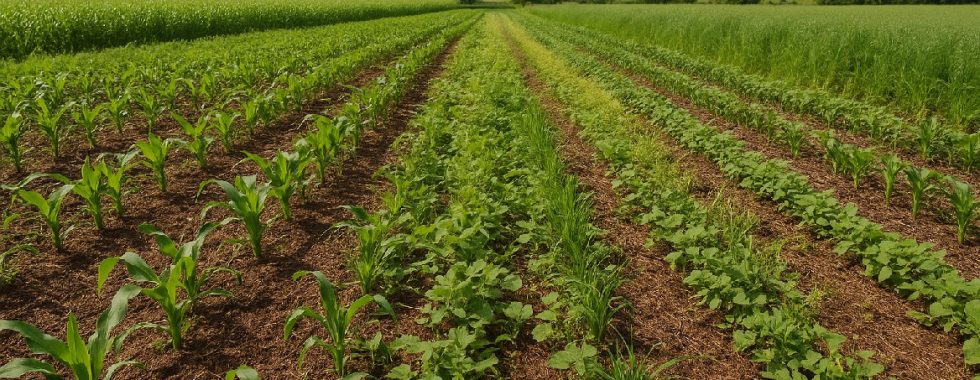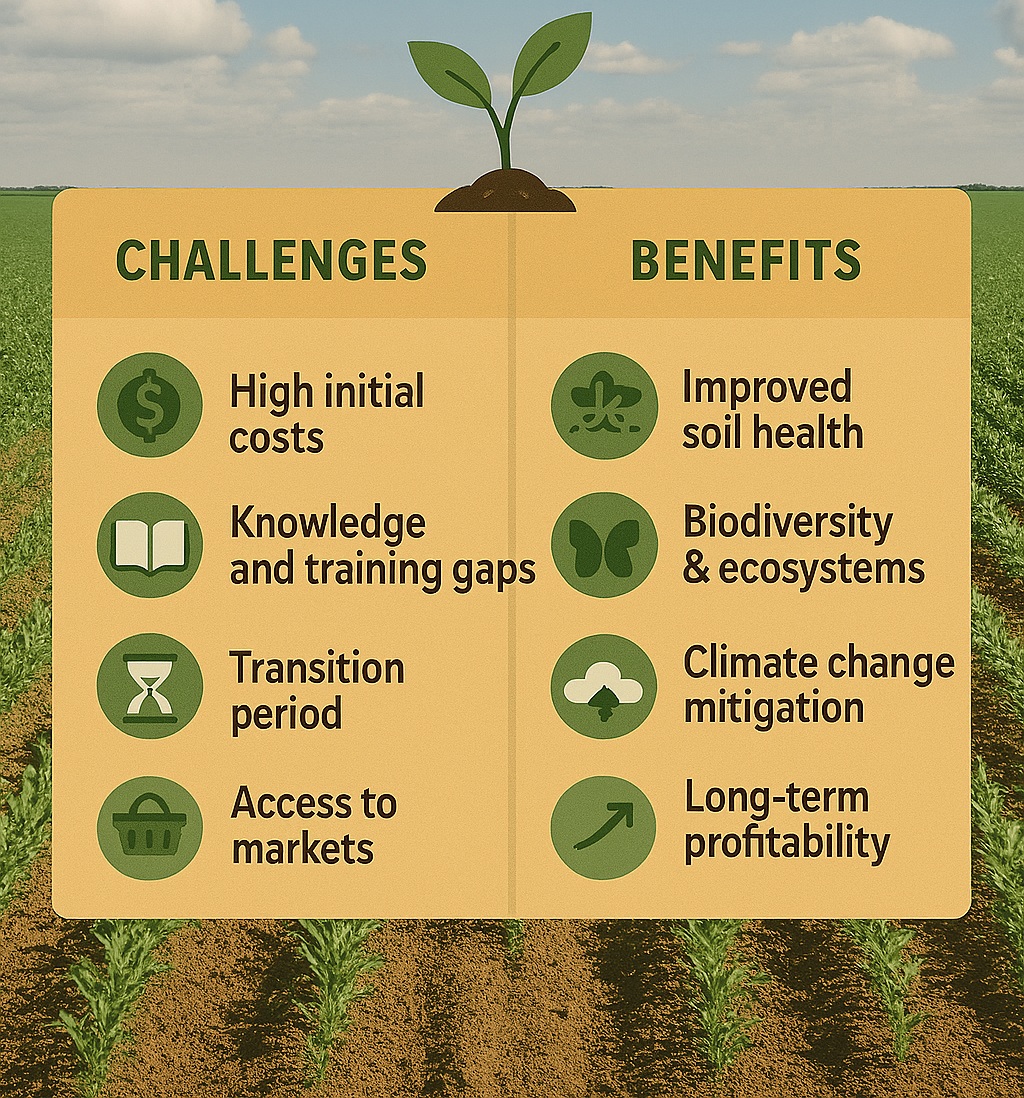Can We Regenerate Soils Without Compromising Yield? What the Data Says
In recent years, “regenerative agriculture” has become a prominent concept across the agricultural sector. It promises improved soil function, reduced input dependency, and long-term system resilience.
However, a central question continues to divide agronomists and farmers alike: Can regenerative practices enhance soil health without compromising yield potential?
This is not a theoretical question. With institutional support from governments, NGOs, and private sector stakeholders, regenerative models are moving from concept to expectation. But are these expectations realistic from a yield and profitability standpoint?
Defining Soil Regeneration
Soil regeneration refers to the process of restoring or enhancing the biological, chemical, and physical capacity of soil. It is distinct from conservation, as regeneration implies active rebuilding rather than mere protection. Typical goals of regenerative approaches include:
- Increasing soil organic carbon
- Enhancing aggregate stability and infiltration
- Boosting microbial biomass and diversity
- Improving nutrient cycling efficiency
These are long-term outcomes, and their agronomic impact may not align with short-term crop cycles.
Yield and Soil Health
Many regenerative methods involve adjusting or reducing conventional inputs and practices:
- Lowering synthetic nitrogen applications
- Adopting reduced or no-till systems
- Incorporating diverse cover crops
- Reducing chemical crop protection tools
Each practice carries yield-related implications, especially during transitional periods. Biological nutrient release is often asynchronous with crop demand, particularly in early spring or in short-season production systems. In addition, microbial activity is temperature-dependent and may not meet crop nitrogen demands at key phenological stages.
The agronomic challenge is therefore not theoretical: regenerative timing and biological processes must align with the physiological needs of the crop, which is not guaranteed.
Key findings from long-term trials reveal context-dependent outcomes:
- Rodale Institute (Pennsylvania, USA): Organic systems, after a 3–5 year transition, achieved comparable maize and soybean yields to conventional systems. In drought years, regenerative systems outperformed conventional due to improved water retention. Notably, in their 40-year trial, corn yields in regenerative systems caught up to and occasionally exceeded conventional yields after approximately 5–7 years.
- University of Illinois: In cover crop and reduced-till systems, corn yields were slightly reduced, soybean yields remained stable. Soil structure and SOM improved measurably after several years.
- Reganold & Wachter (2016 meta-analysis): Regenerative systems averaged 8-19% lower yields. However, optimized crop rotations and nutrient strategies mitigated much of this gap. Yields in regenerative systems often matched conventional systems by the 5th to 6th year.
- CIMMYT and ICARDA (Africa/Asia): Regenerative systems produced higher yield stability across seasons, with slightly lower peak yields.
- Michigan State University Kellogg Biological Station (USA): After 30 years comparing conventional tillage and no-till systems, researchers found that continuous no-till maize reached similar yields to tilled systems after 6–10 years, with superior soil health indicators, improved aggregate stability, and better resilience under drought conditions.
Yield penalties, when they occur, are often transient. With proper planning and adaptation, regenerative systems tend to match or exceed conventional yields within three to seven years.
Drivers of Variability in Outcomes
Soil type, climate, cropping system, and prior management history all shape how regenerative practices perform. For example:
- Yield gains are more likely in soils that are degraded or low in fertility.
- High-yielding systems may experience a temporary drop in yield potential when transitioning to low-input practices.
- In arid and semi-arid zones, practices that improve water retention (e.g., cover crops, mulch) often result in yield increases.
Thus, regeneration is not a plug-and-play protocol. It is a site-specific system that requires tailored agronomic logic.
Nutrient Management: Integration of Biological and Synthetic Inputs
A key challenge in regenerative systems is maintaining consistent nutrient supply. While relying on biological cycling, such as nutrient release from cover crops, compost, or microbial mineralization, plays a central role, it introduces some uncertainty:
- Nitrogen mineralization from residues and compost is temperature and moisture dependent.
- Phosphorus may be present but unavailable due to fixation or stratification.
Eliminating synthetic fertilizers entirely, often leads to nutrient stress, whether visible or hidden. Even in absence of symptoms, yield potential might still be compromised.
Data-driven systems that integrate crop development stages, soil conditions, and field variability can optimize agronomic decisions, ensuring consistent crop performance without compromising long-term soil health. Therefore, in regenerative systems, precision agriculture technologies should be seen as enablers.
Weed Control and Herbicide Use in Regenerative Systems
A less-discussed outcome of regenerative transitions is the potential increase in herbicide use. Reducing tillage often results in higher weed pressure, at least initially. While long-term weed suppression via cover crops and rotation is possible, many farmers rely more heavily on herbicides during early years. Cover crop termination can also increase total herbicide use, especially in large-scale systems using chemical termination.
Without integrated weed management strategies, the agronomic and environmental goals of regeneration may be compromised.
Why Yields Dip During Regenerative Transition
In many documented cases, yield reductions are not due to regenerative principles themselves, but rather to shifts in biological and physical systems. Microbial nutrient cycling, improved aggregation, and root dynamics take time to develop. These early yield dips often reflect a system in flux, and not necessarily agronomic failure.
That said, poor agronomic planning can exacerbate the problem:
- No-till systems adopted without addressing subsurface compaction
- Cover crops implemented without proper planter adjustments
- Nutrient cuts made without analyzing biological mineralization rates
We need to identify what’s really driving the yield change – whether it’s the biological adjustment of the system or missteps in agronomic management.
Decoupling Yield from Profitability: Strategic Framing for Growers
It is essential to distinguish between agronomic ROI (yield response) and economic ROI (profit margin). In some systems, lower yields accompanied by lower input costs or access to premiums can result in improved profitability.
However, the controversy lies in messaging: regenerative agriculture is frequently promoted as yield-neutral or yield-positive. This expectation, when unmet, undermines grower trust. Realistic models and economic forecasts should be part of any regenerative transition plan.
What It Takes to Regenerate Without Losing Yield
Yes – it’s possible to improve soil health without sacrificing yield. But only when key conditions are in place:
- Apply regenerative practices based on agronomic reasoning, not ideology
- Adjust synthetic fertilizers based on need, rather than eliminating them completely
- Introduce changes in phases to allow the system to adapt
- Track field conditions with real data, not assumptions, and catch limiting factors before they cost yield
Positioning Soil Health as a Strategic Agronomic Asset
The core risk facing regenerative agriculture today is not failure, but oversimplification. Regeneration should not be framed as an alternative to agronomy, but rather as an extension of it.
The problem arises when farmers adopt regenerative practices to follow a trend or ideology, without understanding the physical and biological systems behind them. When that happens, the transition stops being agronomic and becomes a rebranded ideology instead of a functional production model.
A data-driven, agronomically informed approach to regeneration offers a viable path forward. Platforms like yieldsApp, for example, are built to do exactly this – helping growers align regenerative goals with reliable, field-level outcomes.




